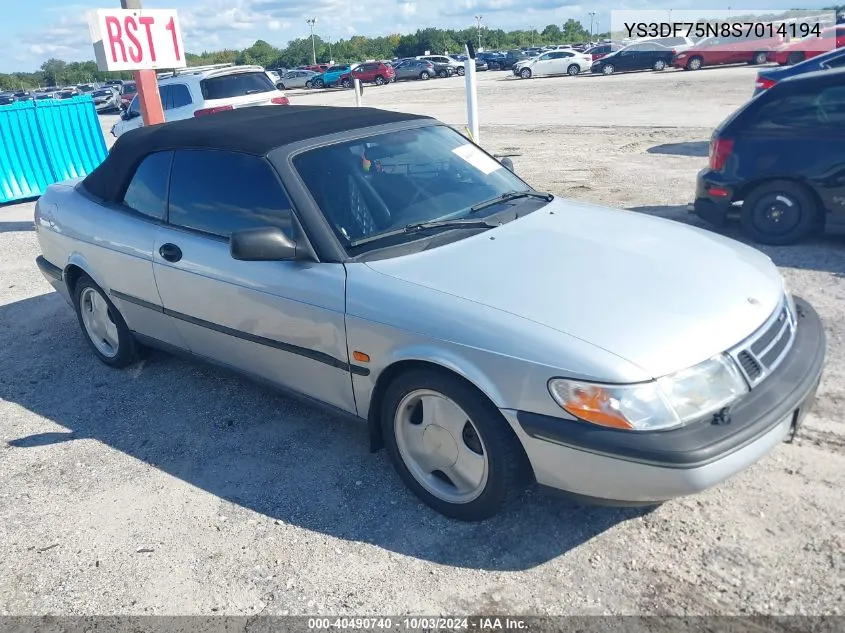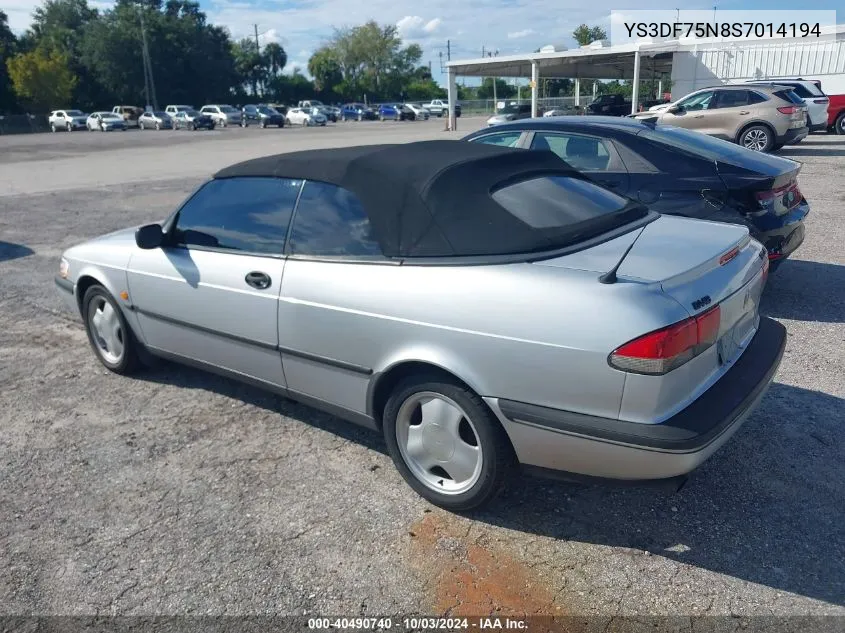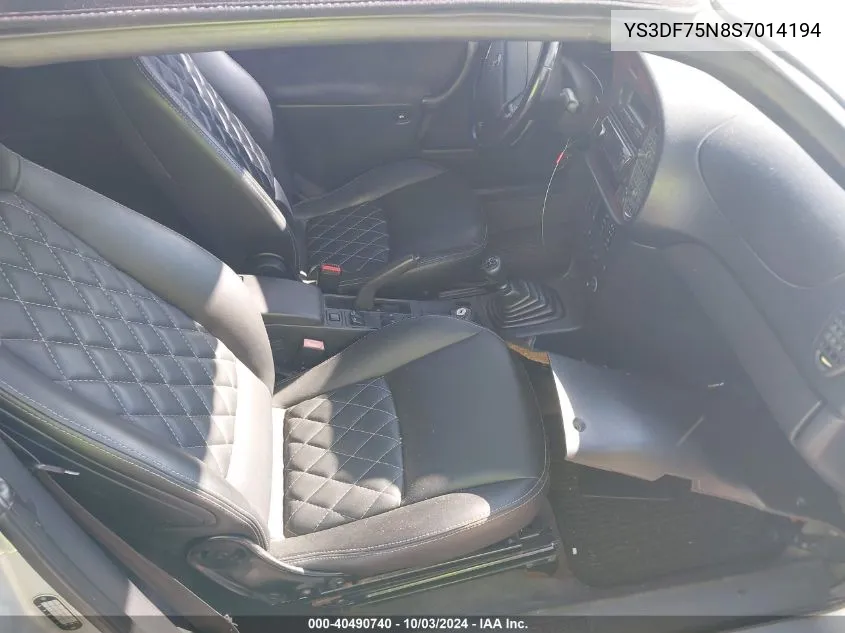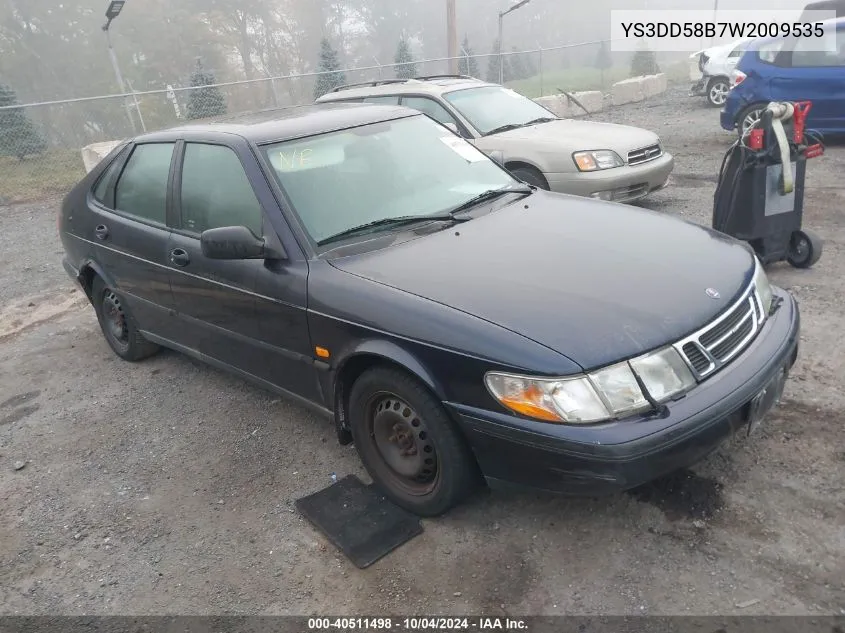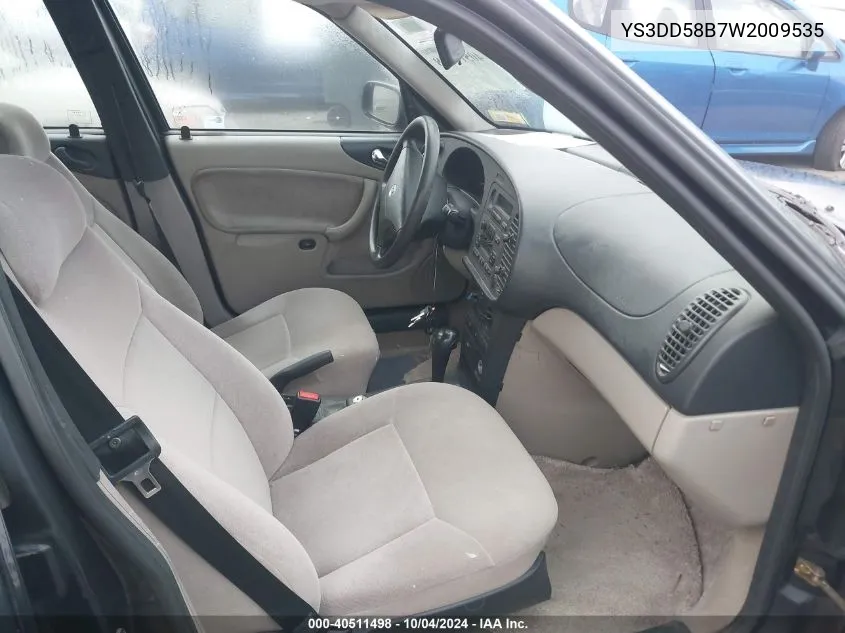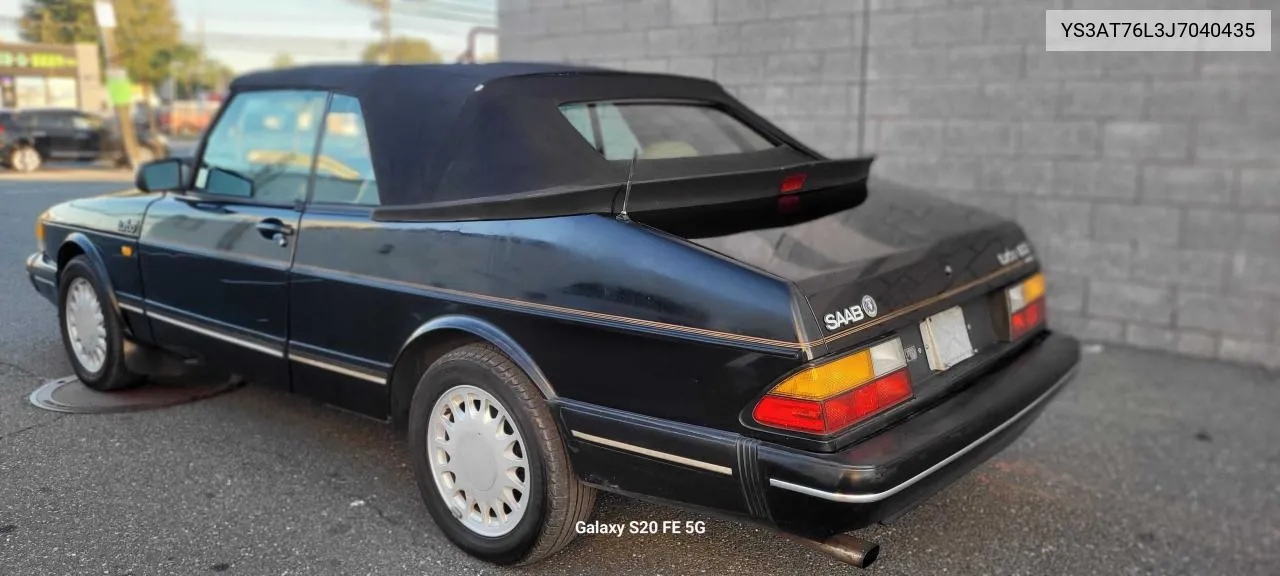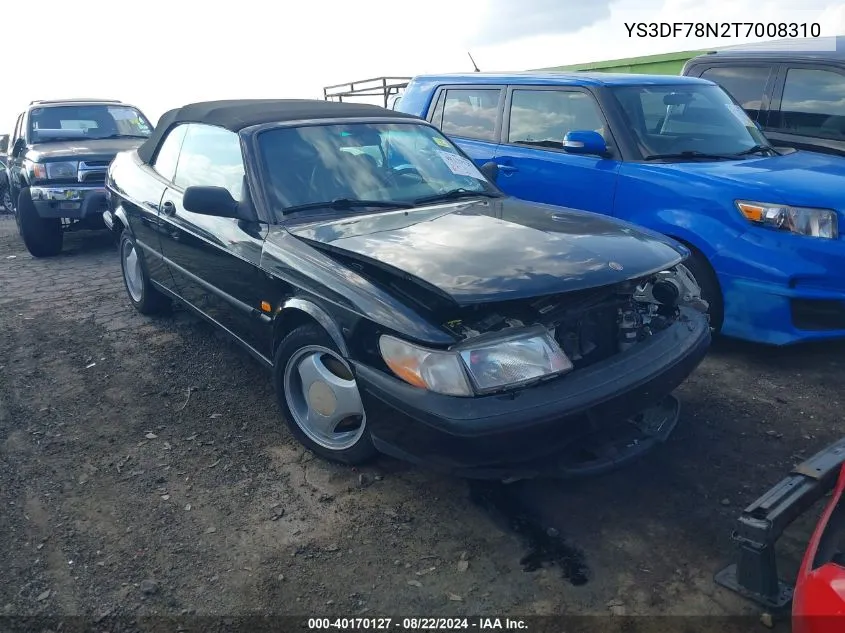Saab 900 (9)
1997 Saab 900 Se
1997 Saab 900 S
1995 Saab 900 Se Turbo
1998 Saab 900 S
1987 Saab 900
1996 Saab 900 Se Turbo
Saab 900 is one of the most iconic cars of the Swedish automobile company Saab. First introduced in 1978, this car quickly won the hearts of car enthusiasts due to its uniqueness, reliability and innovative solutions. Over the years of its existence, Saab 900 has undergone several upgrades, was offered in various modifications and color solutions, leaving a significant mark in the history of the world automobile industry.
The Saab 900 model was produced in two generations: the first generation (the so-called "classic 900") from 1978 to 1993 and the second generation from 1994 to 1998. In each generation, the car underwent significant changes, which allowed it to remain relevant for two decades. Among the many modifications available were both standard models and sports versions, such as the Saab 900 Turbo, which became iconic due to its high dynamic characteristics.
The Saab 900 was available in a wide range of colours, from classic white and black to bright and memorable shades such as Lemon Yellow and Imola Red. This variety allowed buyers to choose a car that perfectly matched their personal preferences and style.
Over the years, the Saab 900 has sold a significant number of cars, and although exact figures may vary, it is known that the model has enjoyed steady demand in all major markets. Some versions, such as the Saab 900 Turbo and Saab 900 Convertible, have been particularly successful, thanks to their combination of performance, style and innovative technology.
However, not all Saab 900 modifications were flawless. During its life cycle, the car faced a number of technical problems, the most notable of which were issues with the reliability of the transmission and the corrosion resistance of some body elements. However, despite these difficulties, the Saab 900 remains a symbol of engineering and innovation, and is still valued by car enthusiasts and collectors around the world.
Saab 900: History of the model and its development
The first generation of the Saab 900, known as the "Classic", was produced from 1978 to 1993. In 1994, the second generation, often referred to as the "New Generation" (NG), was introduced and was produced until 1998. Despite the end of production, the Saab 900 remains popular among car enthusiasts and collectors due to its heritage and unique features.
Этапы развития Saab 900
- 1978: The first generation Saab 900 was launched, based on the Saab 99 platform. The model featured front-wheel drive, turbocharging and a high level of safety.
- 1984: Introduction of the Saab 900 Aero, a high-performance version with a more powerful engine and improved aerodynamics.
- 1986: The Saab 900 Cabriolet debuts, becoming one of the first modern front-wheel drive convertibles and gaining popularity for its style and reliability.
- 1993: The first generation of Saab 900 ended production and the last models were released, which became especially valuable among collectors.
- 1994: Introduction of the second generation Saab 900, developed on the Opel Vectra platform. The model received more modern technologies and design, while remaining true to the Saab tradition.
- 1998: The Saab 900 ended production and was replaced by the Saab 9-3, which continued to develop the ideas and technologies laid down in the 900.
During its production, the Saab 900 was available in a variety of colors, from classic black and white to bright colors such as red and blue. The total number of cars sold exceeded 900 thousand units, which confirms its popularity and demand.
The most successful modifications were the Saab 900 Turbo and Saab 900 Cabriolet, which are still in demand on the secondary market. However, like any model, the Saab 900 also had its problematic versions, mainly related to electronic problems and corrosion in early models. Nevertheless, thanks to the robust design and attention to detail, many of these cars are still in use and delighting their owners.
The evolution of the Saab 900: key milestones and important changes
Throughout its history, the Saab 900 has undergone many changes and modifications that have allowed it to remain competitive and in demand on the market. Let's look at the key stages and important changes that have influenced the development of this model.
Saab 900 milestones and changes
- 1978: The first production of the Saab 900 - the model is presented with a petrol engine, 99 hp, and an original body design.
- 1980: Introduction of turbocharging - The Saab 900 Turbo becomes one of the first models to be equipped with a turbocharger, greatly increasing its performance and popularity.
- 1983: Introduction of a three-door model - expansion of the model range to attract a younger audience and sports car enthusiasts.
- 1986: Interior modernization - improvement of comfort and ergonomics of the cabin, introduction of new technologies such as on-board diagnostics computer.
- 1990: Body restyling - changes in the car's appearance, improvement of aerodynamic characteristics and introduction of new colours.
- 1994: End of first generation production - The final production of the first generation Saab 900 begins, after which development and production of the next generation begins.
These changes have kept the Saab 900 at the forefront of popularity and technological advancement, meeting the needs and expectations of its owners.
Saab 900: Modifications from basic to sports versions
The Saab 900 was produced from 1978 to 1998 and during this time it underwent many changes and modifications. From basic models to sports versions, each modification had its own unique features and purpose.
Saab 900 has always been distinguished by innovative solutions and a high level of safety, which made it popular among car enthusiasts. Let's consider the main modifications of this model, starting from standard versions and ending with sports ones.
Main modifications of Saab 900
- Base model: The standard Saab 900 came with a 2.0-liter engine and minimal options. It was a reliable and economical car for everyday use.
- Saab 900 Turbo: One of the most famous and popular modifications. Saab 900 Turbo was equipped with a turbocharged engine, which significantly increased the power and dynamics of the car. This model became an icon of the 80s due to its power and reliability.
- Saab 900 Aero: A sports version featuring improved aerodynamics, sports suspension and a powerful engine. The Saab 900 Aero was intended for those who like fast and dynamic driving.
- Saab 900 Cabriolet: An open-top version that was very popular in warm countries and among convertible car lovers. This car combined style and comfort.
- Saab 900 LPT (Low Pressure Turbo): Low pressure turbo modification. Combined economy and moderate power, providing a smooth and comfortable ride.
Each of these modifications had its own advantages and was intended for different categories of drivers. Saab 900 was able to satisfy the needs of both ordinary car enthusiasts and fans of fast driving.
Color solutions: popular and rare options
The Saab 900, being one of the iconic cars of the Swedish car manufacturer, was offered in a wide range of colors. Over the years of production of this model, Saab gave its customers the opportunity to choose from many different colors, from classic and popular to rare and exotic options.
The colour schemes of the Saab 900 often depended on the year of production and model modification. Some colours became the hallmark of a certain generation, while others remained unnoticeable and were rarely seen on the roads.
Popular color schemes
- Black is one of the most classic and sought-after colours, emphasizing the elegance and style of the Saab 900.
- White is a universal and pure color that has always been popular among buyers.
- Red - bright and eye-catching, this color was often chosen by owners of sports modifications of the Saab 900.
- Silver is a color that emphasizes the modern lines and design of the car.
- Dark Blue is another classic choice that gave the Saab 900 a solid and noble look.
Rare color solutions
- Metallic Green is a rare color that made the Saab 900 stand out from other cars.
- Gold - an exotic and unusual choice that emphasized the individuality of the owner.
- Purple is an unusual and rare color that added a special charm to the Saab 900.
- Orange is another rare color that was found on a limited number of cars.
Regardless of the color scheme, each Saab 900 retained its uniqueness and style, which made it attractive to a wide range of car enthusiasts.
Saab 900 Production Years and Sales Statistics
The Saab 900, first launched in 1978, has become a landmark vehicle for the Swedish carmaker. The model has undergone many changes throughout its history and has been widely praised for its innovation and reliability.
For decades, the Saab 900 has remained a popular choice among car enthusiasts around the world. Let's look at the key stages of the model's production and sales.
Years of release and key moments
- 1978-1988: First generation Saab 900. This period is marked by the release of classic models such as the Turbo and SPG.
- 1988-1993: Transitional phase with minor design and performance updates.
- 1994-1998: The second generation of the Saab 900, known as the "NG900" (New Generation). Significant changes in design and construction.
Sales statistics
YearCars sold
1978 | 20,000
1980 | 35,000
1985 | 50,000
1990 | 45,000
1995 | 60,000
1998 | 55,000
1978 | 20,000
1980 | 35,000
1985 | 50,000
1990 | 45,000
1995 | 60,000
1998 | 55,000
The greatest success came in the mid-1980s, when sales of the Saab 900 reached their peak. However, despite declining sales in some years, the model remained popular and in demand due to its reputation and unique style.
As a result, the Saab 900 is deservedly considered one of the company's most successful models. The car left a significant mark on the history of the automotive industry and continues to be valued among collectors and enthusiasts to this day.










